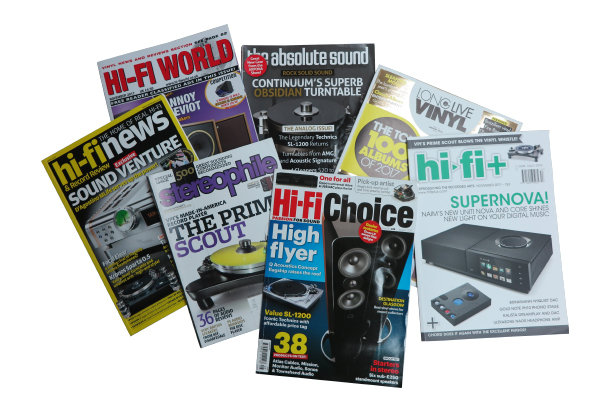How to Choose your Hi Fi System
Why you should choose components for your Hi Fi System with care?
Acquiring a seriously good Hi Fi system is a process that’s really worth getting right. Like buying a house, it's going to be with you for a long time. Those who invest in a better system, do so for good reason:
We suggest you familiarize yourself with the principles discussed on this page before rushing into any decisions. If it gets too technical then just skip down to the bottom of the page and we can advise you.

Why Sound Quality matters
The Vienna Opera house is home to one of the best orchestras in the world and hosts world-famous performers like Placido Domingo. Seats to attend are not exactly cheap, so what makes this venue so popular? The opera house is not the biggest in the world – in fact when it was rebuilt, they made it smaller for one reason which was to improve the acoustics. The fact is that people recognise great sound quality when they hear it, whether at a conscious or sub-conscious level.
Many people take sound quality as a given when it says "high sound quality" on the advert or description. The problem is there is no standard to define sound quality. There are one inch (25mm) loudspeakers dressed up as green hairy gonks with the words "High Sound Quality" written on the box. This could be true if the makers are comparing it with the terrible sound of a railway station tannoy.
Ways to Choose
Choosing equipment is easy at a superficial level but choosing the best system to meet your preferences in the long term is another matter altogether. There are quite a number of interactive variables.
The number of products in the marketplace is absolutely massive once you become aware of them (upwards of 300 for any item of equipment). These products vary significantly so it helps to start by identifying your particular aspirations and tastes. The main factors probably governing choice are considered below:
Hi Fi System Matching
Each item in a Hi Fi system tends to work best with favourable partnering equipment. For example small inefficient speakers tend to favor high power solid state amps. Conversely large high efficiency Horn speakers tend to sound at their best with low power valve amplifiers.
Hi Fi System Heirarchy and Budget
Some components have much more influence than others on sound quality so it pays to know how to apportion your budget between various components to get the most return on your investment.
A word about Technical Specifications
We carry out numerous technical measurements but wish to introduce a word of caution about the weight you attach to measurements. Subjective listening results sometimes contradict the interpretation of technical data. When this occurs we pay attention to the subjective results to develop a better interpretation of technical measurements. Designers often short-circuit this stage as it is time-consuming and expensive to carry out extensive listening tests.

A fraction of the magazines published every month by the Hi Fi Press
How to evaluate endorsements & reviews etc
You will read product reviews and comments from a wide spectrum of sources. There are highly competent, trustworthy reviewers in some magazines. At the other end of the spectrum you will find forums or websites where a few malicious trolls think nothing of putting down the best products whilst sounding like they're doing you a favour by warning you about them. How do you sort out where the truth lies?
Auditioning
Despite the amazing number of variables in assessing Hi-Fi equipment, there are products that consistently win great reviews from a large cross-section of magazines in the UK and worldwide. Room acoustics and equipment synergy will not completely wreck a good product.
Where performance between two items is close, then yes, these factors are critical. However there are certain aspects of music that transcend others. You may have 10 things you want your system to do in terms of reproduction but if you know your top 3 then you will probably end up happy and evaluating equipment suddenly becomes a whole lot easier.
It’s always best to use a top quality source whether analogue or digital as information lost at source can never be retrieved - no matter how good the rest of the system is.
Beware of products that just sound good on certain kinds of music. The best products work as well for classical music as they do for rock and jazz. It should be realistic, engaging, addictive and organic like live music.
Examples of Common flaws in sound quality
When listening to different systems there can be flaws in the sound that are not immediately obvious to some. However in the long term these become apparent with the realization that something is missing or intrusive in the music. It may help if we list a few of the most common offenders:
Ferocious treble – usually mistaken for fantastic detail or clarity.
Lack of bass – People often think a drum strike is a bass note. In fact, it really encompasses a bundle of frequencies stretching from low to very high treble – the percussive (high frequency ) part of a drum strike is commonly called “great bass”. Real bass gives music a depth, authority and sense of real power. It is not lightweight, ear piercing, harsh, aggressive or wearing. These qualities can fool people initially as they can sound very impressive on first audition, but ultimately they are artificial and far from real music.
Timing in the music – A common example of poor timing is the way in which bass notes can lag behind the rest of the music, leading to a sense of disjointedness.
Improper Tonal balance – Good tonal balance is important for pitch sensitive listeners. It’s also essential to conjure up front to back perspective of sounds (otherwise known as image depth).
Hi Fi Shows
We've put Hi Fi shows in a different catagory to auditioning because hearing anything at a show is very different to a demonstration. Shows are a great way to gain exposure to a much larger range of products than you would find at a shop or dealer. You can also get a vague idea of what equipment sound like.
Room Acoustics
Many people underestimate the effect of room acoustics on choice of equipment. However this is a fundamental influence and accounts in large measure for the differences of opinion among reviewers and manufacturers on various products. From years of visiting dealers, reviewers and Hi-Fi shows, Origin Live have observed the effect of variables and a brief distillation of this experience is set out below.
Asking for our advice
We are here to help. It's likely that you have questions even after initial research so please ask using the form below.